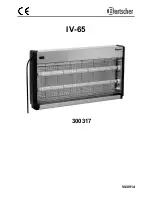
GE
D
IRECTION
FQ091019, R
EVISION
2
V
IVID Q
N S
ERVICE
M
ANUAL
Chapter 4 - General Procedures and Functional Checks
4-37
•
Adjust
Frame rate
to a higher setting to improve motion detection, or to a lower setting to improve
resolution.
NOTE:
Frequency and Frame rate settings may affect the Low Velocity Reject.
•
Adjust
Power
to obtain an acceptable image using the lowest setting possible. This is particularly
important in CW mode, as the energy duty cycle is 100% (constant).
NOTE:
The Doppler Power setting affects only Doppler operating modes.
•
Adjust the following settings to further optimize the display of the image.
•
Use the
Horizontal sweep
to optimize the sweep speed.
•
To view signal detail, adjust
Scale
to enlarge the vertical spectral Doppler trace.
•
Use
Invert
to reverse the vertical component of the spectral Doppler area of the display.
•
Use
Angle correction
to steer the ultrasound beam to the blood flow to be measured.
4-4-5
Tissue Velocity Imaging (TVI) Checks
4-4-5-1
Introduction
TVI calculates and color codes the velocities in tissue. The tissue velocity information is acquired by
sampling of tissue Doppler velocity values at discrete points. The information is stored in a combined
format with grey scale imaging during one or several cardiac cycles with high temporal resolution.
4-4-5-2
Preparations
1.) Connect one of the probes, to the scanner’s left-most probe connector.
"Connecting Probes" on page 3-58
for information about connecting the probes.
2.) Turn ON the scanner
The 2D Mode window is displayed (default mode).
3.) If needed, adjust the Display’s Brightness and Contrast setting.
4.) Press
TVI
.
5.) Use the trackball (assigned function: Pos) to position the ROI frame over the area to be examined.
6.) Press
Select
. The instruction Size should be highlighted in the trackball status bar.
NOTE:
If the trackball control pointer is selected, press
trackball
to be able to select between Position
and Size controls.
7.) Use the trackball to adjust the dimension of the ROI.
4-4-5-3
Adjust the TVI Controls
•
To reduce quantification noise (variance), the Nyquist limit should be as low as possible, without
creating aliasing. To reduce the Nyquist limit: Reduce the
Scale
value.
NOTE:
The Scale value also affects the frame rate. There is a trade off between the frame rate and
quantification noise.
•
TVI provides velocity information only in the beam direction. The apical view typically provides the
best window since the beams are then approximately aligned to the longitudinal direction of the
myocardium (except near the apex). To obtain radial or circumferential tissue velocities, a
parasternal view must be used. However, from this window the beam cannot be aligned to the
muscle for all the parts of the ventricle.
NOTE:
PW will be optimized for Tissue Velocities when activated from inside TVI.
















































